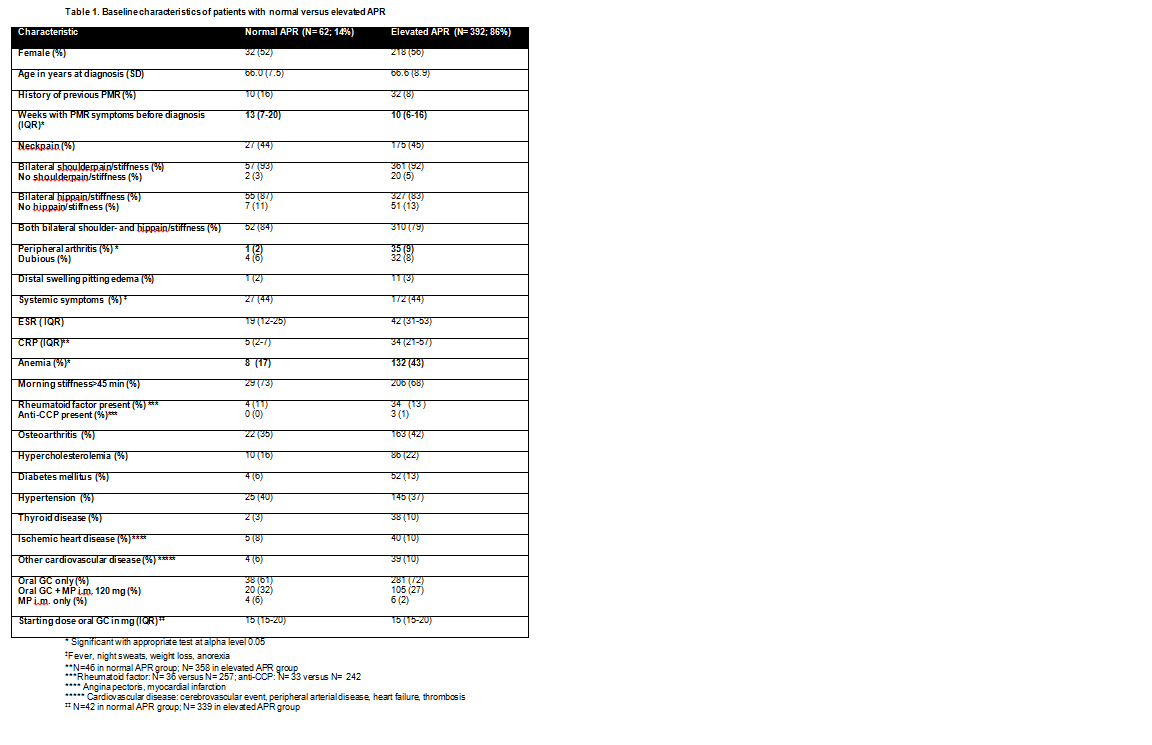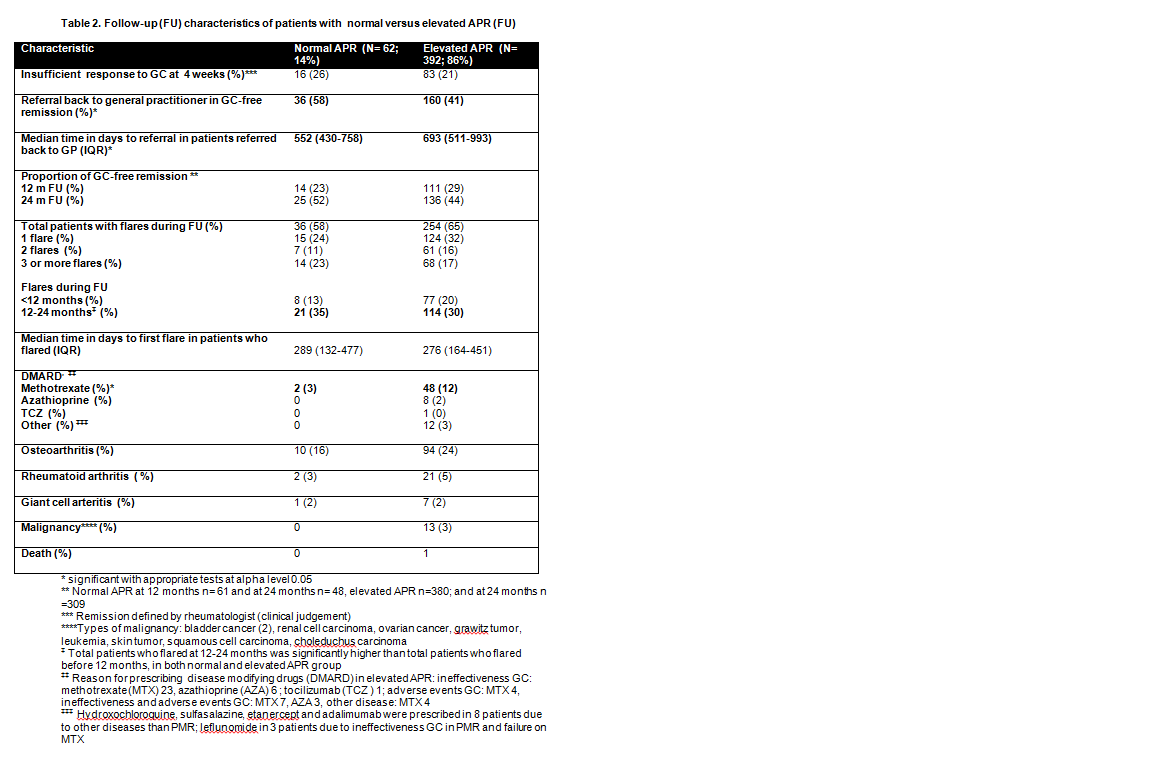Session Information
Session Type: Poster Session (Sunday)
Session Time: 9:00AM-11:00AM
Background/Purpose: Systemic signs of inflammation such as raised CRP or ESR are a classical feature of PMR, but some patients present with normal acute phase reactants (APR).1,2 It is not known whether these patients represent milder forms of PMR, whether their disease is not yet fully expressed, or whether they represent another disease entirely. We will explore baseline differences in demographics and clinical characteristics in PMR patients with and without elevated APR to evaluate whether they are distinct subgroups of PMR.
Methods: We conducted a retrospective cohort study of newly diagnosed PMR patients (clinical diagnosis) who visited our outpatient clinic between April 2012 and September 2017. Patient with concomitant inflammatory rheumatic disease were excluded. Data on patient-, disease,- and treatment characteristics were extracted from the electronic health record. Descriptive statistics were used [mean (SD), median (p25-p75) or n (%) as appropriate], and differences between patients with normal versus high APR(CRP >10 mg/L and/or ESR >30mm/hour) were tested using Fischer’s exact test for categorical data, t-test for normally and Wilcoxon test for non-normally distributed data.
Results: 454 patients were included (table 1). Sixty-two patients had normal, and 392 had elevated APR. Fewer patients with normal APR had peripheral arthritis (2 versus 9 %; p=0.044) and anemia at diagnosis (17 versus 43%;p=0.001). Furthermore, patients had a longer median duration of symptoms before diagnosis (13 versus 10 weeks; p=0.02) and were more likely to have a history of PMR (16 versus 8 %;p=0.057). Patients with normal APR had a shorter median time to referral general practitioner due to GC-free remission (552 versus 693 days; n= 36 versus 160;p=0.023). In both groups flares occurred more often between 12-24 versus < 12 months compared to the first 12 months (35 versus 13%; p=0.001 and 30 versus 20%;p=0.010 in normal and elevated APR group respectively). Fewer patients with normal APR were prescribed methotrexate; 3 versus 12%;p=0.046).
Conclusion: The results of this cohort suggest that patients with normal APR are a somewhat milder subset of PMR patients and have a better prognosis. However, flare risk does not differ from APR positive patients.
To cite this abstract in AMA style:
Marsman D, van der Maas A, den Broeder A, den Broeder N, Boers N, van den Hoogen F. Polymyalgia Rheumatica Patients with and Without Elevated Baseline Acute Phase Reactants: Distinct Subgroups of Polymyalgia Rheumatica? [abstract]. Arthritis Rheumatol. 2019; 71 (suppl 10). https://acrabstracts.org/abstract/polymyalgia-rheumatica-patients-with-and-without-elevated-baseline-acute-phase-reactants-distinct-subgroups-of-polymyalgia-rheumatica/. Accessed .« Back to 2019 ACR/ARP Annual Meeting
ACR Meeting Abstracts - https://acrabstracts.org/abstract/polymyalgia-rheumatica-patients-with-and-without-elevated-baseline-acute-phase-reactants-distinct-subgroups-of-polymyalgia-rheumatica/


